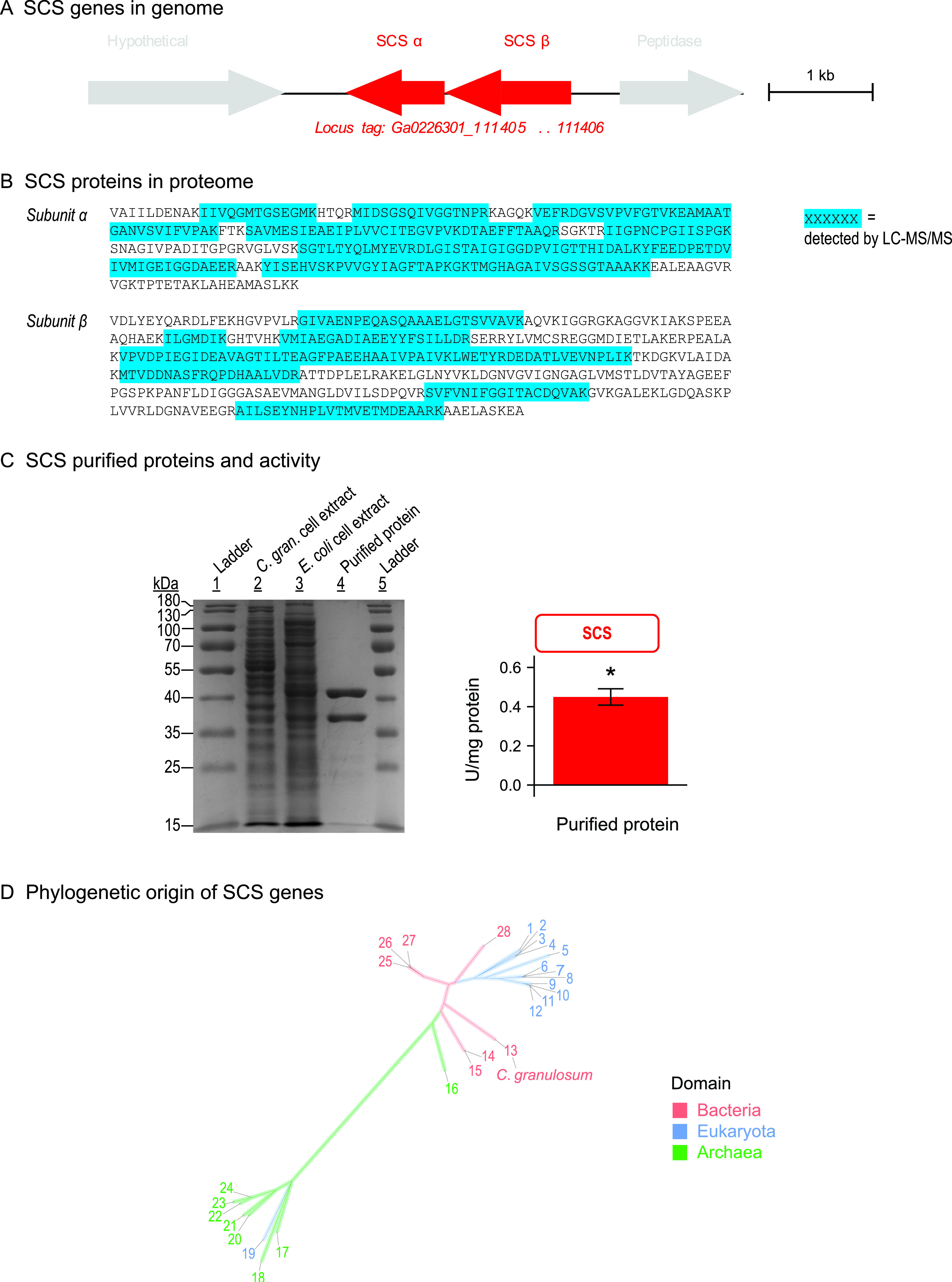FIG 5.

The gene encoding SCS in C. granulosum is a bacterial homolog, pointing to a bacterial origin of the SCACT/SCS pathway. The data were obtained as described for Fig. 4, except that genes are for SCS instead of SCACT. Purity shown by SDS-PAGE was 96%. The amounts of protein loaded were 7.7, 7.2, and 1.4 μg for lanes 2, 3, and 4. Protein sequences are as follows: 1, Toxoplasma gondii; 2, Blastocystis sp,; 3, Solanum lycopersicum (homolog 2); 4, Solanum lycopersicum (homolog 1); 5, Saccharomyces cerevisiae; 6, Columba livia (homolog 2); 7, Mus musculus; 8, Homo sapiens (homolog 1); 9, Columba livia (homolog 1); 10, Homo sapiens (homolog 2); 11, Sus scrofa (homolog 1); 12, Sus scrofa (homolog 2); 13, Cutibacterium granulosum; 14, Thermus thermophilus; 15, Thermus aquaticus; 16, Candidatus “Korarchaeum cryptofilum” (homolog 4); 17, Archaeoglobus fulgidus (homolog 1); 18, Archaeoglobus fulgidus (homolog 2); 19, Giardia lamblia; 20, Thermococcus kodakarensis (homolog 3); 21, Thermococcus kodakarensis (homolog 4); 22, Thermococcus kodakarensis (homolog 1); 23, Pyrococcus furiosus (homolog 5); 24, Pyrococcus furiosus (homolog 6); 25, Escherichia coli; 26, Alcanivorax borkumensis; 27, Pseudomonas aeruginosa; and 28, Advenella mimigardefordensis. Full information on proteins is in Data Set S3. Abbreviations: C. gran., Cutibacterium granulosum; SCACT, succinyl-CoA:acetate CoA-transferase; SCS, succinyl-CoA synthetase (ADP forming).
